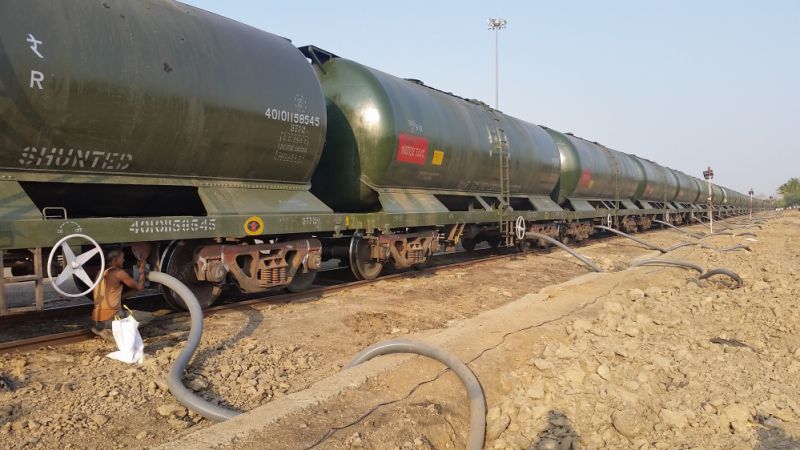India Drought: Millions without Steady Water Supply
Published on by Water Network Research, Official research team of The Water Network in Government
Around 330 million people in India are affected by drought, according to the government.
The Marathwada region in India's western Maharashtra state is badly affected, reeling under the worst drought in decades.
Around 400km from Mumbai, the region has been getting insufficient rains for the past three years.
Temperatures are in the low 40s in some areas, with others only cooling to 38C at night. It is worse for the poor in rural areas, who are forced to drink whatever water they can.
In 2015, the region received only 49 percent of what is considered a normal amount of rainfall.
Some parts received even less: a meagre 35 percent of normal rainfall.
Trains loaded with water are being moved across the country, but farmers' wells are drying up and drinking water is being rationed.
Arriving almost daily, each train brings millions of litres of water to this drought-stricken area. But even this is not enough.
"It's not helped much because we only got it once before in the past 15 days," a village resident told Al Jazeera.
"We're only getting 50 litres per house every eight days, while others are getting 200 every day."
This year's heatwave is making things worse. Temperatures in many parts of India are well above average, with some places reporting temperatures more than 5C higher than would be expected at this time of the year.
The heat is now being blamed for the death of more than 100 people and fears are rising that this could turn into a major catastrophe.
Globally heat waves are one of the largest causes of weather-related deaths.
The situation is particularly hazardous if the temperatures do not drop during the night, because this would normally be when the body would recover from the heat.
The situation in India is exacerbated because many people do not have access to air-conditioning.
Electric fans can only provide relief if temperatures are below 35C, and they have also been shown to accelerate dehydration.
Last year 2,500 people died in a heat wave which gripped the country in May.
For now, the farmers await the monsoon downpours that are forecast for June.
Source: Aljazeera
Media
Taxonomy
- Crisis
- Drought
- India
2 Comments
-
The agriculture sector is dependent on ground water extracted by farmers using tube wells. 89 percent ground water use is for agriculture. The agriculture dependent on surface water is less. It is very difficult to recharge ground water at every place, where as ground water got stored blow ground in centuries. As the water for agriculture is extracted in large quantities through tube wells, the water level in open wells and in tube wells bored for drinking water is lowering at a very fast rates. There are dark zones in most of the districts of India. What will happen when 95 percent ground water in an aquifer will be extracted for agriculture. The situation has further deteriorated as the natural drainage channel areas are being used for domestic and commercial buildings and development works, preventing free flow of water to the downstream areas. mining activities are also causing large scale wastage of precious water and lowering water table. The farmers may be allowed to grow less water consuming crops, but not the rice and sugar cane etc. it is high time that Modi Govt may bring a legislation for stoppage of extracting ground water for agriculture and disallowing sowing of high water consuming crops.
-
It is true that few states of India are facing draught situation due to deficient monsoon since last two years. It has become a topic of discussion and politics too and media has material to prints.
A question arises in my mind that what happened to groundwater? What is the position of run-off? What measures are being taken by local people to harvest rainwater. Is it only responsibility of government to take all steps or local people should also have contribution? Department of water resources and Ground-water of Maharastra must have done some work, which is operating for decades.